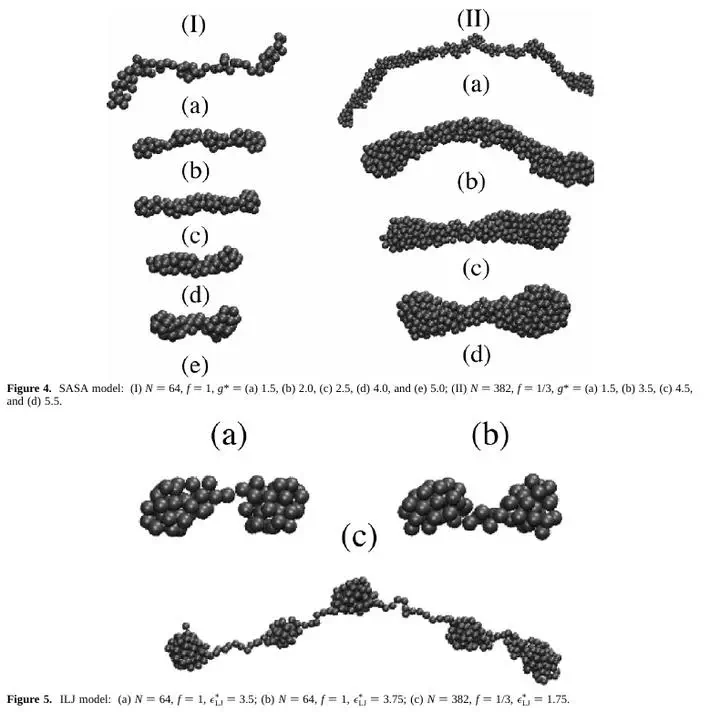 Image credit: G. Reddy
Image credit: G. Reddy
Abstract
Computer simulations of dilute polymer solutions are presented with different models for the solvent. Three different problems are studied: the collapse dynamics of a neutral polymer chain, the conformational properties of a polyelectrolyte chain in a poor solvent, and the adsorption of a polyelectrolyte chain near a charged planar surface. In addition to an explicit solvent model where the solvent atoms are incorporated as a second component, two implicit solvent models are also studied. In the first, called implicit Lennard-Jones (ILJ), the effect of solvent is taken into account via a Lennard-Jones pair potential between the monomers, and in the second, called SASA, the solvent is taken into account via a many-body interaction that depends on the solvent-accessible surface area (SASA) of the monomers. In all cases, there are qualitative differences between the properties predicted by the ILJ and the explicit solvent model. In particular, the ILJ predicts the trapping of a collapsing neutral polymer in metastable states, stable bead−necklace structures of polyelectrolytes in poor solvents, and globule formation without adsorption for polyelectrolytes in poor solvents at a charged surface. For similar systems, on the other hand, the explicit solvent model predicts a smooth collapse, transient bead−necklace structures, and adsorption flat against the surface, respectively. The predictions of the SASA model are in qualitative agreement with the explicit solvent simulations in all cases, although there are quantitative differences. This emphasizes the importance of many-body solvent effects and suggests a computationally tractable way of incorporating them.